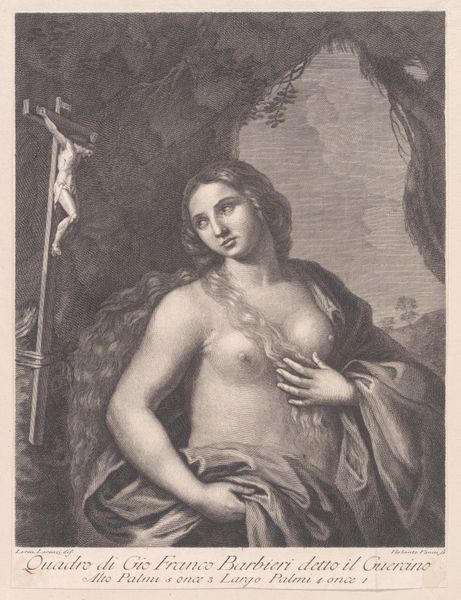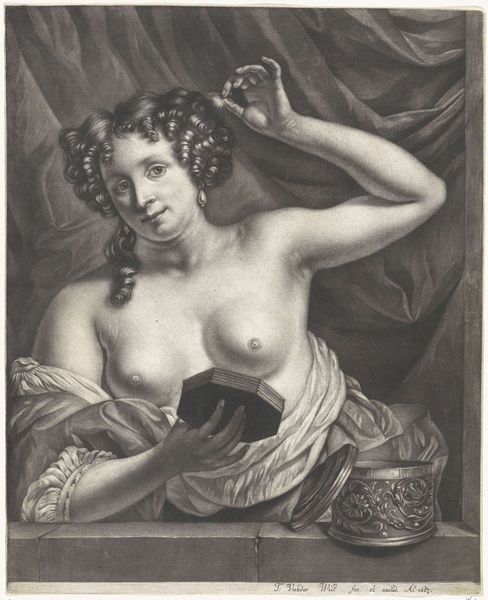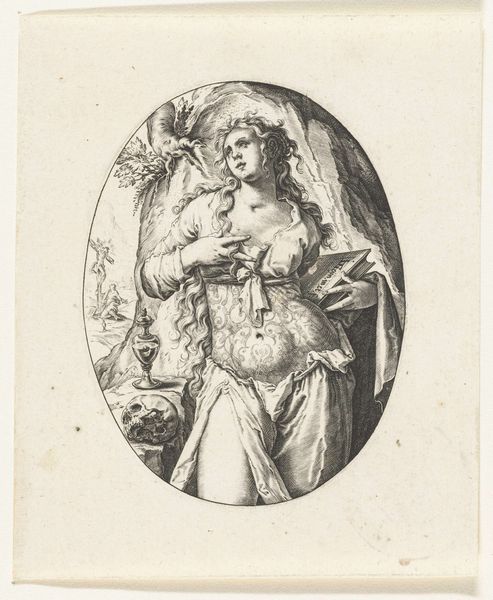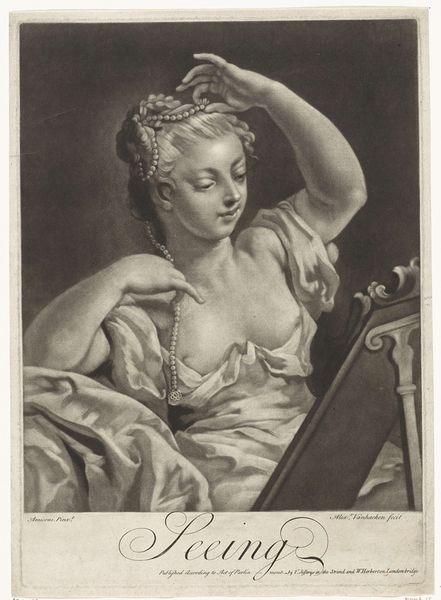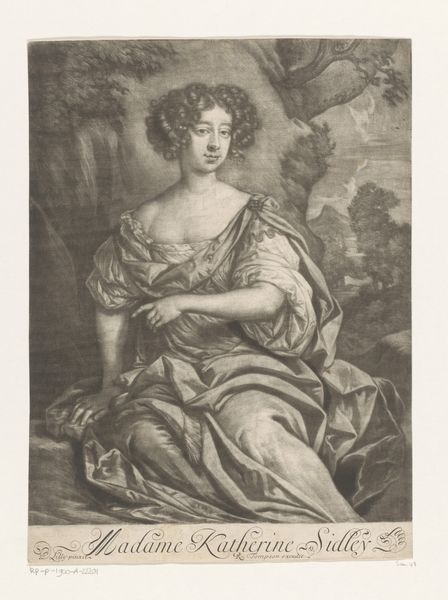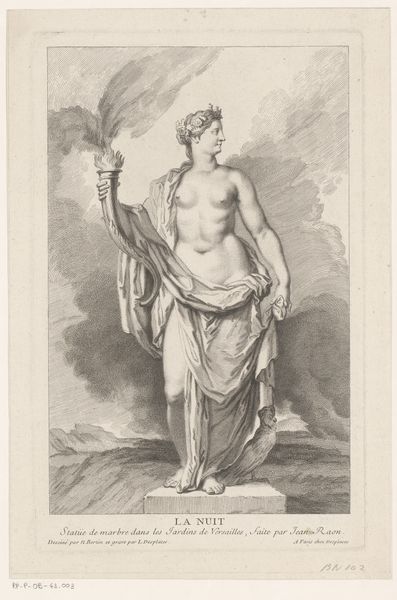
engraving
#
portrait
#
allegory
#
baroque
#
figuration
#
line
#
portrait drawing
#
nude
#
engraving
Dimensions: height 183 mm, width 141 mm
Copyright: Rijks Museum: Open Domain
Curator: Ah, here we have “Venus with a Swan and an Apple,” an engraving dating somewhere between 1685 and 1732, after Pellegrini, and engraved by Aquila. What do you make of it? Editor: My first thought is, there’s a dreaminess to it, an almost hesitant sensuality in the line work. The engraver allows a real softness, a roundness, where another might insist on the sharper edges of ideal beauty. It’s really lovely. Curator: I'm struck by how this engraving circulates and reinterprets a motif popular among Venetian painters. Looking at its material production, an engraving such as this made imagery accessible across Europe to a broader audience beyond the elite circles of painting patronage. Editor: That’s true, I think it gives it this intimate, almost domestic feeling – less about spectacle, and more about…well, inviting Venus into your home. It reminds me of the way we reproduce images today and share them. The swan also intrigues me, I feel it hints at a whole story beneath the surface, a narrative. Curator: Certainly. The swan and the apple are loaded with symbolism. The swan alludes to Leda, one of Zeus's many infidelities. And the apple... It seems to evoke the Judgement of Paris. Editor: It almost feels cheeky that these complex layers are communicated via something like an accessible print. Curator: Precisely! These reproductive prints flattened the hierarchy, making available these classical, aristocratic images for the bourgeoisie’s eager consumption. In considering the means of distribution we see that the materiality becomes integral to interpreting this image. Editor: And I keep coming back to that swan…there's something watchful, even a bit wary in its gaze, and in Venus’ too, for that matter, a strange intimacy almost bordering on awkwardness. As though we, the viewers, walked in at the wrong moment in that narrative of mythological eroticism. Curator: Interesting! So the mechanical reproducibility challenges traditional hierarchies and gives the work this quality of immediacy, this…unexpected realism that strikes you. Editor: Maybe it just reminds me we all have our awkward moments! It’s also lovely to see that suggested through line engraving – I tend to think of engraving as exacting and refined, but you are right that the mechanical reproduction creates space for immediacy that gives the picture its power. Curator: Well, yes, by examining how meaning shifts based on method of creation, circulation and the audience reception. I think we see the significance of engraving. Editor: I couldn't agree more! It's wonderful how this technique allows this image to exist in our shared cultural landscape.
Comments
No comments
Be the first to comment and join the conversation on the ultimate creative platform.
